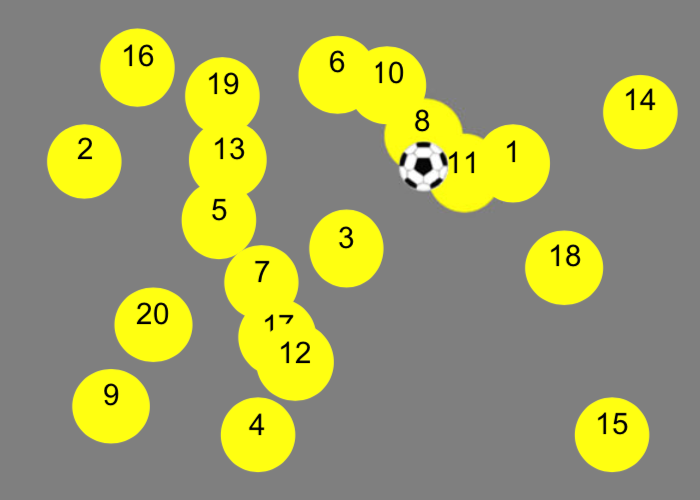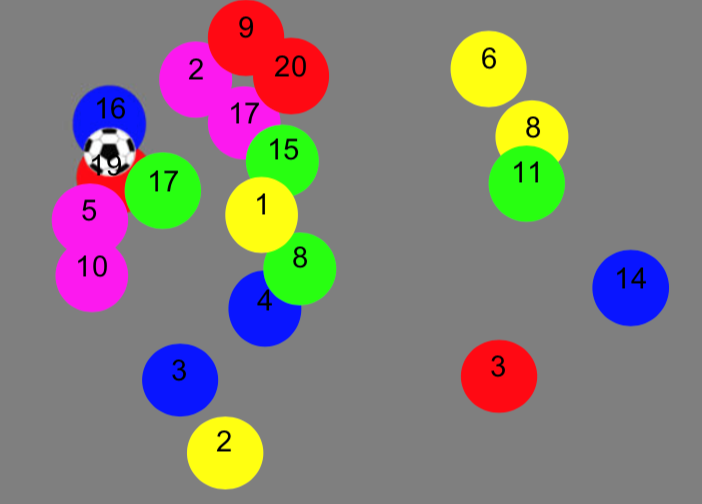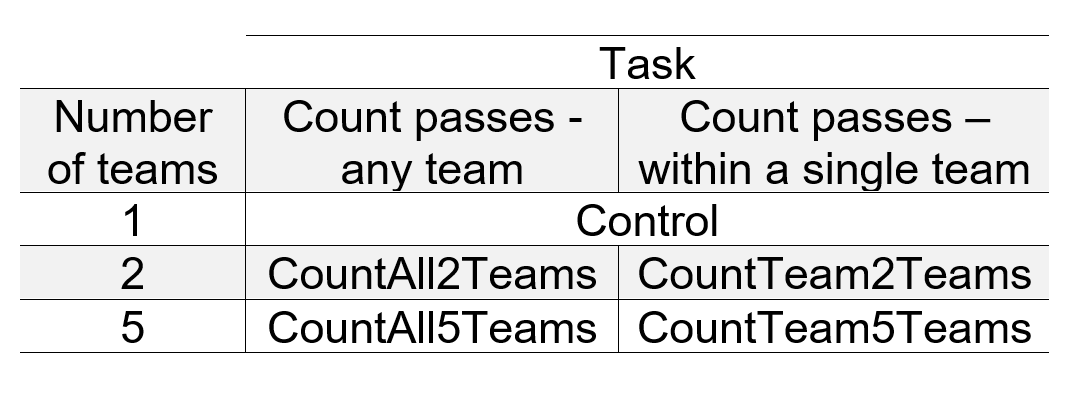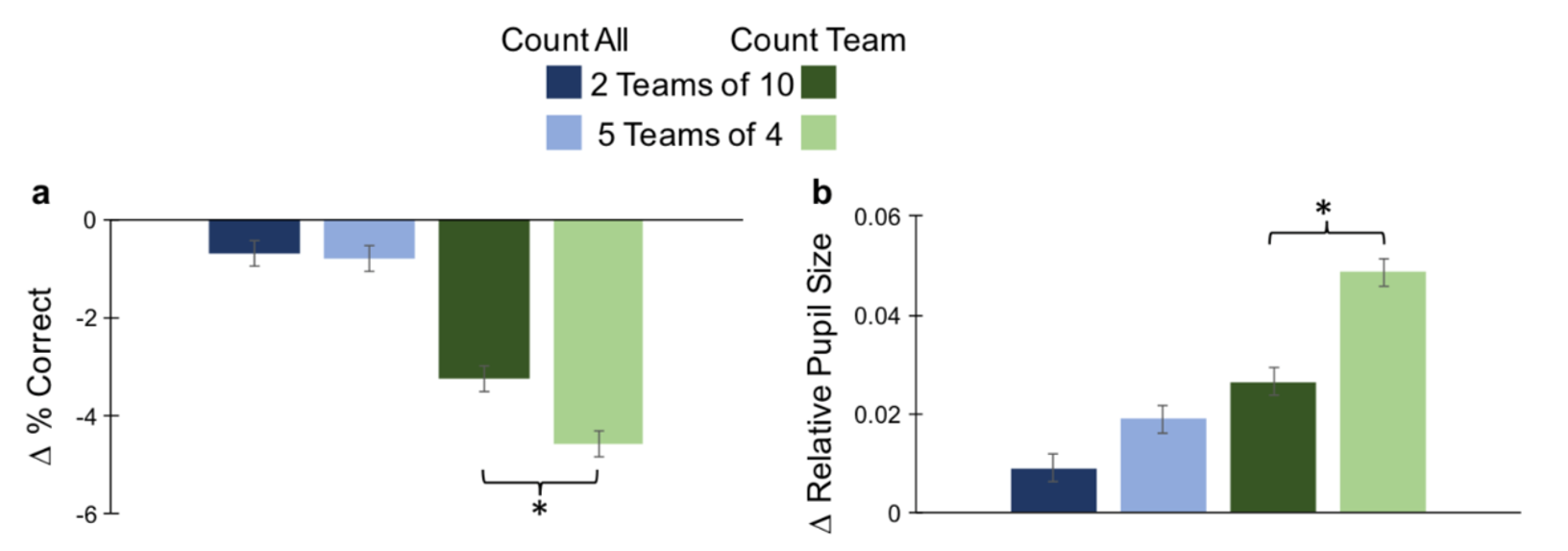Finding your office key amidst your building key, the lab key, your house key, the other house key in case you need to cat-sit for a friend is like finding a needle in a haystack. People who have tons of keys develop elaborate organizational systems, clumping together keys for similar places―like the Psychology building―which can help them pick out the keys they need faster. Others organize their keys with stickers or decorations, place them in a specific order in a ring, or use even more complex mnemonics.
Using these kinds of tricks can increase the efficiency and capacity during tasks with limited attentional resources. Indeed, clustering groups of things is a core strategy for all kinds of search tasks, ranging from memory to visual search in dynamic environments.
Of course, we are not always searching through static environments like key rings. Keeping track of what’s going on in a complex and changing environment can range from tracking the movements of different groups of birds in a forest, watching out for cars and bicycles and other hazards as a pedestrian on a busy street, or watching a sports game like football (American or otherwise).
In many team sports like soccer, players are grouped into teams and are distinguishable by their jerseys―for example, one team may be blue, and the other may be yellow. Individuals within a team are distinguished by the numbers on their jerseys. Given the effectiveness of clustering strategies in more static domains, it is possible that the organization of teams into distinguishable groups can make visual information processing easier.
This is exactly the research question explored by researchers Sibel Akyuz, Jaap Munneke, and Jennifer Corbett in a recent study that appeared in the Psychonomic Society journal Attention, Perception, and Psychophysics.
In their study, Akyuz and colleagues tested whether different amounts and groupings of information in a complex and changing visual display could mitigate some of the costs associated with tracking events. Akyuz and colleagues were not only interested in the accuracy of tracking how many times a digital ball moved between players (“passes”), but also in whether visual grouping decreases cognitive load. To measure cognitive load, Akyuz and colleagues made use of recent research that has linked pupil size, measured via eye-tracking, to cognitive load. It is now commonly accepted that increased task demands are associated with increases in pupil dilation.
Using the sports analogy above, Akyuz and colleagues tested whether adding a specific structural feature like “jersey color” to circles on a display could make visual processing more efficient, both for tracking whether a passing event had occurred and how easy the tracking task was.
In this experiment, the researchers manipulated both the specific pass-tracking task and the structure of the “teams” in the display. The two pass-tracking tasks were either relatively simple, or slightly more complicated.
In the first (simple) case, participants were told to count passes without paying attention to who the players were―a pass between any player in the display to any other player should be counted. In the more difficult case, participants were told to track only passes within a single, pre-specified team (e.g., blue). For the control condition (presented below in the next figure), there was only one team, so these two tasks are identical. But, as the number of teams gets greater, the story of how different colored jerseys affects the pass-tracking task might change.

In more complicated displays, there were either two or five teams, and participants were either told to track all passes between any pair of players, or only passes within a single team.
Consider the figure below, which contains four teams of 5 players each. In the “Count all” condition, participants would need to count the pass indicated by the soccer ball, but they would not in the “Count within a specific team” condition, because the pass is not between two blue (or red) players.

The study thus comprised 5 conditions, summarized below:

Keeping with the idea that grouping can increase visual processing efficiency, Akyuz and colleagues predicted that if participants had to keep track of a specific team, this would be easier in the case where the teams were larger than when they were smaller.
That means that they predicted that the case with the most teams would be the most difficult, since there were 5 teams with 4 players each.
Both the accuracy data and the pupil size data spoke to this, and are reproduced below:

Accuracy was the worst in the case where a team only had 4 players on it, and correspondingly, pupil size was the largest relative to the control (single team) condition. The indicator of cognitive load thus tracked observed accuracy.
A few open questions remain―for example, would a condition with two teams of 4 players each be easier than when there are 5 teams? Knowing the answer to these questions could help us pinpoint whether the structural properties of the display (e.g., luminance or team diversity) is behind this effect. This cannot currently be tested with this design. Furthermore, the link between cognitive processing difficulty and pupil size is still somewhat unclear, though more progress is made in understanding this measurement every day.
Even though some theories of information processing have stated that keeping track of up to 10 players should be more difficult than keeping track of 5, this study shows that it is easier to do this when there are only 2 teams than when there are 5 teams.
On a practical level, the results of the study by Akyuz and colleagues suggest that keeping track of complex information like dynamic scenes could benefit from tagging, marking, or other annotation that makes it easier to group entities and the events they participate in.
Psychonomic society journal article featured in this post:
Akyuz, S., Munneke, J., & Corbett, J. E. (2018). Set similarity modulates object tracking in dynamic environments. Attention, Perception, and Psychophysics, 80, 1744-1751. DOI: 10.3758/s13414-018-1559-y.
